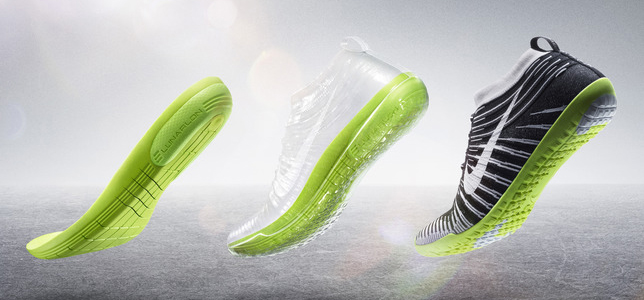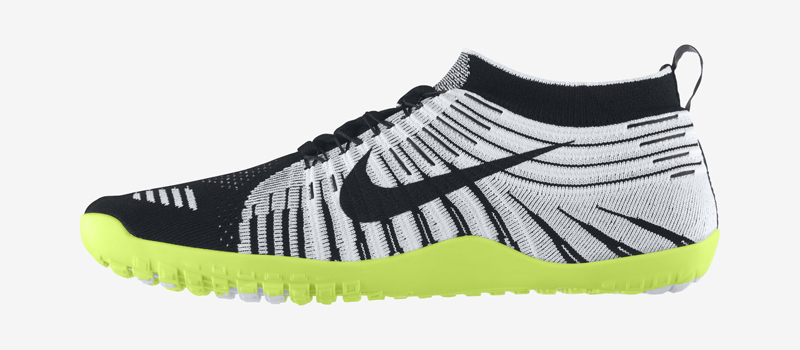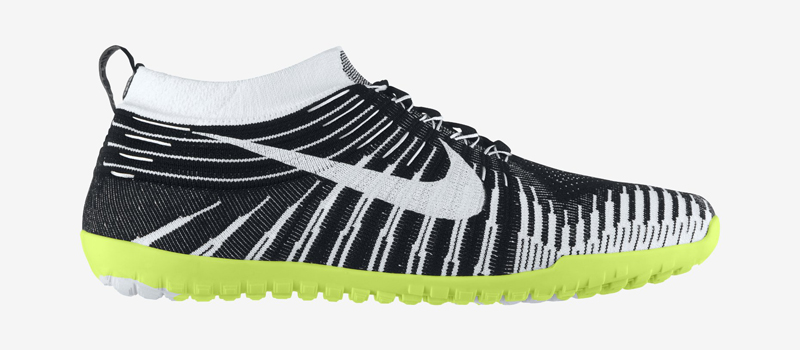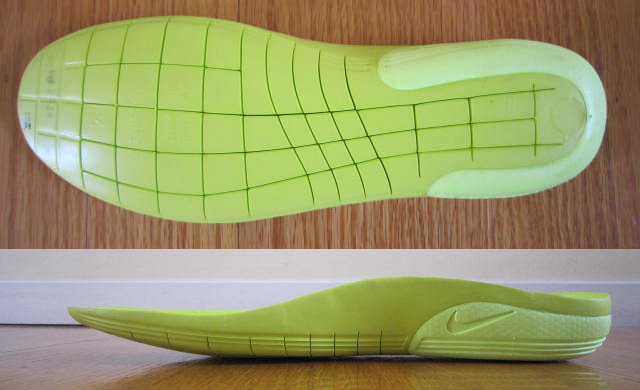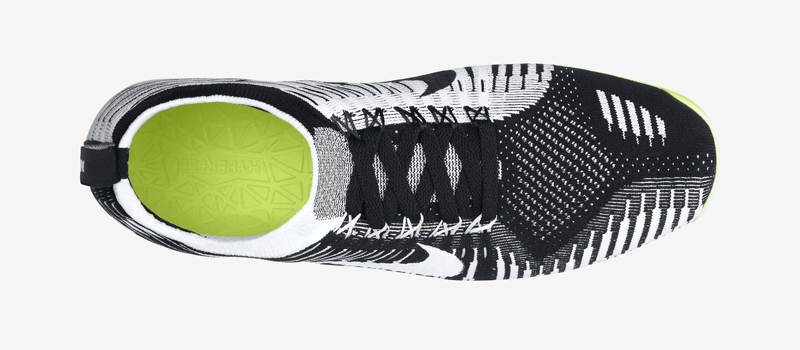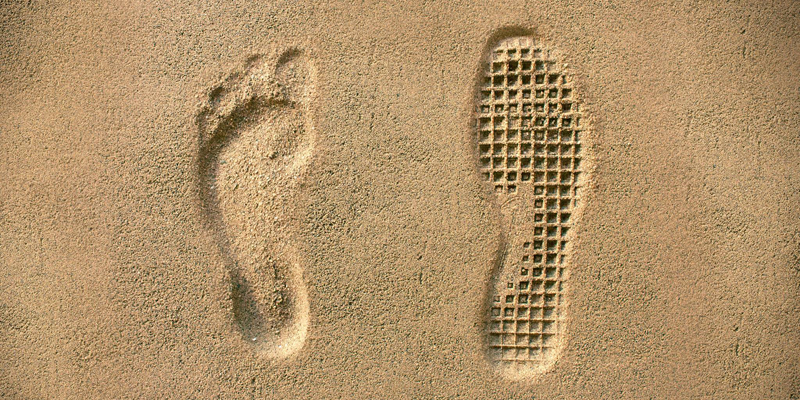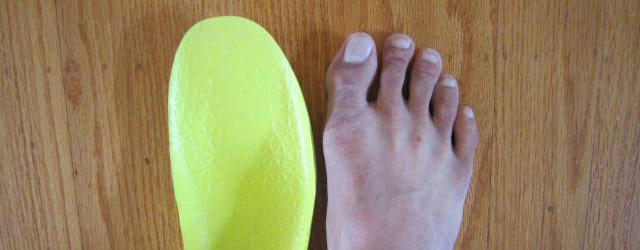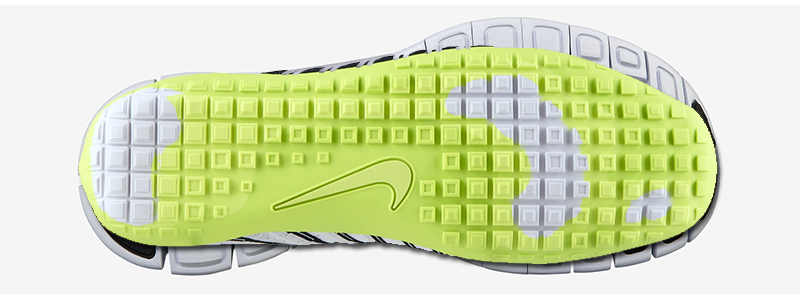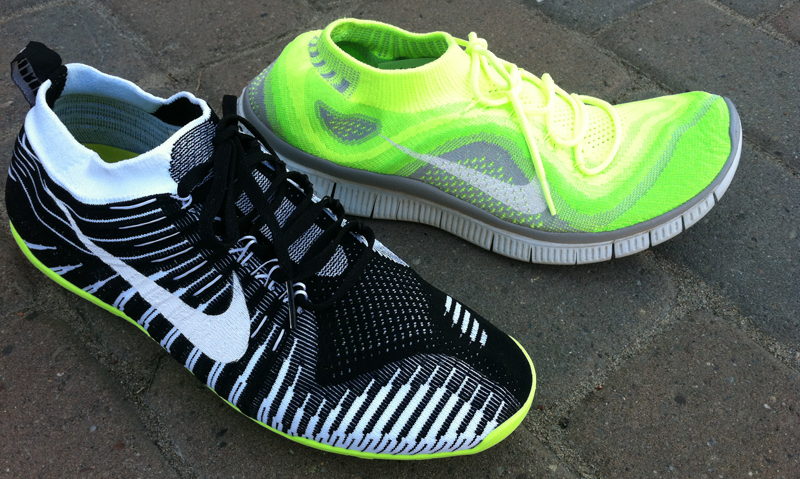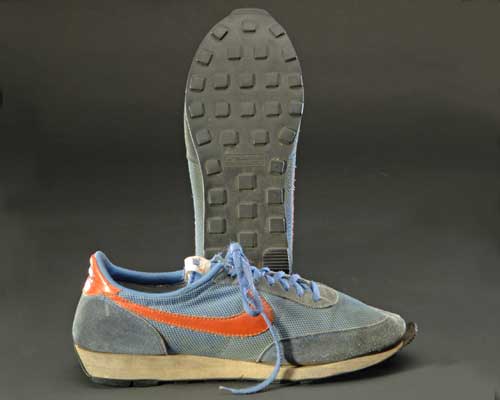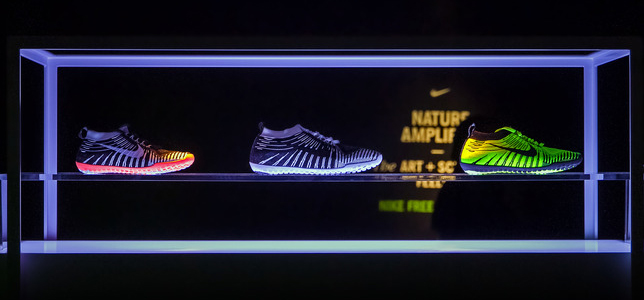The Nike Free Hyperfeel is created to intuitively move with the foot. It is inspired by Nike’s “Nature Amplified” design ethos – an approach focused on the body in motion and fueled by scientific data and athlete insights. Nike research insights informed the precise placement of cushioning and outsole traction for a low-profile shoe that provides padding and protection only where necessary. A drop-in Lunarlon insole with flex grooves allows the foot to have direct contact with the Lunarlon cushioning. The waffle outsole is ultra-thin, allowing the foot to get closer to the ground.
Scientists in the Nike Sport Research Lab carefully studied which areas of the foot come into contact with the ground and absorb pressure, and which areas require traction. They used pressure-mapping technology and high-speed film to analyze the foot in motion. The result is Nike Free Hyperfeel, a shoe that mimics the intricate workings of the human foot: Lunarlon foam replicates cushioned pads under the foot. The outsole protects like hardened skin on the sole. Dynamic Flywire flexes and contracts, inspired by ligaments.
Here’s an amazing video with Tony Bignell, VP of Footwear Innovation, going inside the design of the Nike Free Hyperfeel.
Nike Free Hyperfeel has fewer total shoe parts and places the foot directly on top of responsive Lunarlon foam,” says Tony Bignell, VP of Nike Footwear Innovation. “The shoe acts as extension of the foot and delivers a natural motion sensation for the runner.
The Nike Free Hyperfeel gets you closer to the ground for a revolutionary feel and unparalleled performance without sacrificing comfort. The highly flexible drop-in midsole offers the natural-motion benefits of Nike Free with the soft, responsive cushioning of Lunarlon. It features deep flex grooves that allow your foot to move freely, while still providing a plush, resilient ride.
For a close-to-the-ground sensation, the Lunarlon insole replaces both the traditional midsole and sock liner, reducing layers and adhesives for lightweight comfort. The ultra-thin Waffle outsole uses less rubber than traditional outsoles for greater flexibility and lightweight durability plus multi-surface traction.
The compressive Flyknit upper features highly elastic threads that conform to the foot for a sock-like, locked-in fit. It seamlessly integrates areas of stretch, support and breathability where you need it most. The Flywire technology integrates with the laces for a dynamic, supportive fit. Additionally, the Phylon heel clip provides for underfoot support.
Harking back to Nike co-founder and Oregon Track & Field coach Bill Bowerman, the Nike Free Hyperfeel is structured on a waffle outsole that is reengineered with strategically placed pistons, reflecting key pressure points. Highly durable XDR rubber is added in high-wear heel areas. Today’s runners can get to relive the old times just like Bowerman’s athletes at the University of Oregon – Go Ducks!
We have already covered what Nike Flyknit and Flywire technology is in our review of the Nike Free Flyknit+ model. The same technologies are used in the Nike Free Hyperfeel model.
So how did the Nike Free Hyperfeel perform?
The first thing that I noticed after I took the shoes out of the box is how narrow the toe box is. Considering that they’ve made the toe box on the Nike Free Flyknit+ a lot wider, I was disappointed. In one of Nike’s promo pages, they have an image showing the reverse prints made by a human foot and that by the Nike Free Hyperfeel waffle outsole. You can see that the waffle outsole is much narrower than the human foot. Same for mine. And when running, you toe splay out even more. Don’t understand why Nike did not make the toe box wider…
I overlaid the outsole of both Nike Free models to illustrate that fact a bit more. Having a wide toe-box is one of my pet peeve not just because I have a 2E+ width foot but because your toes need to be able to splay freely upon foot strike to absorbs and dissipate the forces accordingly. This is one of the most important feature of a true minimalist running shoe.
Even though the Flyknit upper is stretchable, my toes are still touching tightly on the both medial and lateral sides of the toe box. For short runs (less than 10K), I did not get any hot spots. I taped my toes for longer runs.
Like the Nike Free Flyknit+ model, the shoe laces are technically not needed and I have ran without the laces in my pair. The bonus heel pull tab does make it easier to slip the shoe on and off. Wished they had also integrated that into the Nike Free Flyknit+ model.
The measured stack height of my pair comes in around 20mm. Without the midsole, it is about 9mm. Midsole is about 11mm at heel, 7mm at forefoot – the differential/drop becomes 4mm with the midsole. Still not bad as anything 4mm or lower is noise to me.
I prefer to have the Lunarlon insole when walking on asphalt and concrete or when running on roads. But would take out the insole otherwise. The proprioception is significantly better without the insole but still decent with the insole for running and walking on hard surfaces. Great traction when doing speed work on a rubber track and running on hilly trails.
I honestly enjoyed running in these shoes but the experience would have been even better if the toe box is designed correctly like other minimal shoes (specifically, Altra, Merrell, Skechers, SKORA, and VIVOBAREFOOT). That is probably the only real fault I can find with the Nike Free Hyperfeel. Some of you will like the Lunarlon insole. Some of you will like the insole removed and a sock liner used – I did that with the thinnest one I can find (Skechers).
Looks like Nike might have gone “back to the future” for the Nike Free Hyperfeel outsole. More on the original Nike Waffle Trainer at the Natural Running Center.
The Nike Free Hyperfeel is available in two colorways for men and a single colorway for women.
The Nike Free Hyperfeel is now available at: Nike and Road Runner Sports
*Product provided by Nike. CMP.LY/1 Review
If you have a product you’d like reviewed, contact me at info@weartested.org


